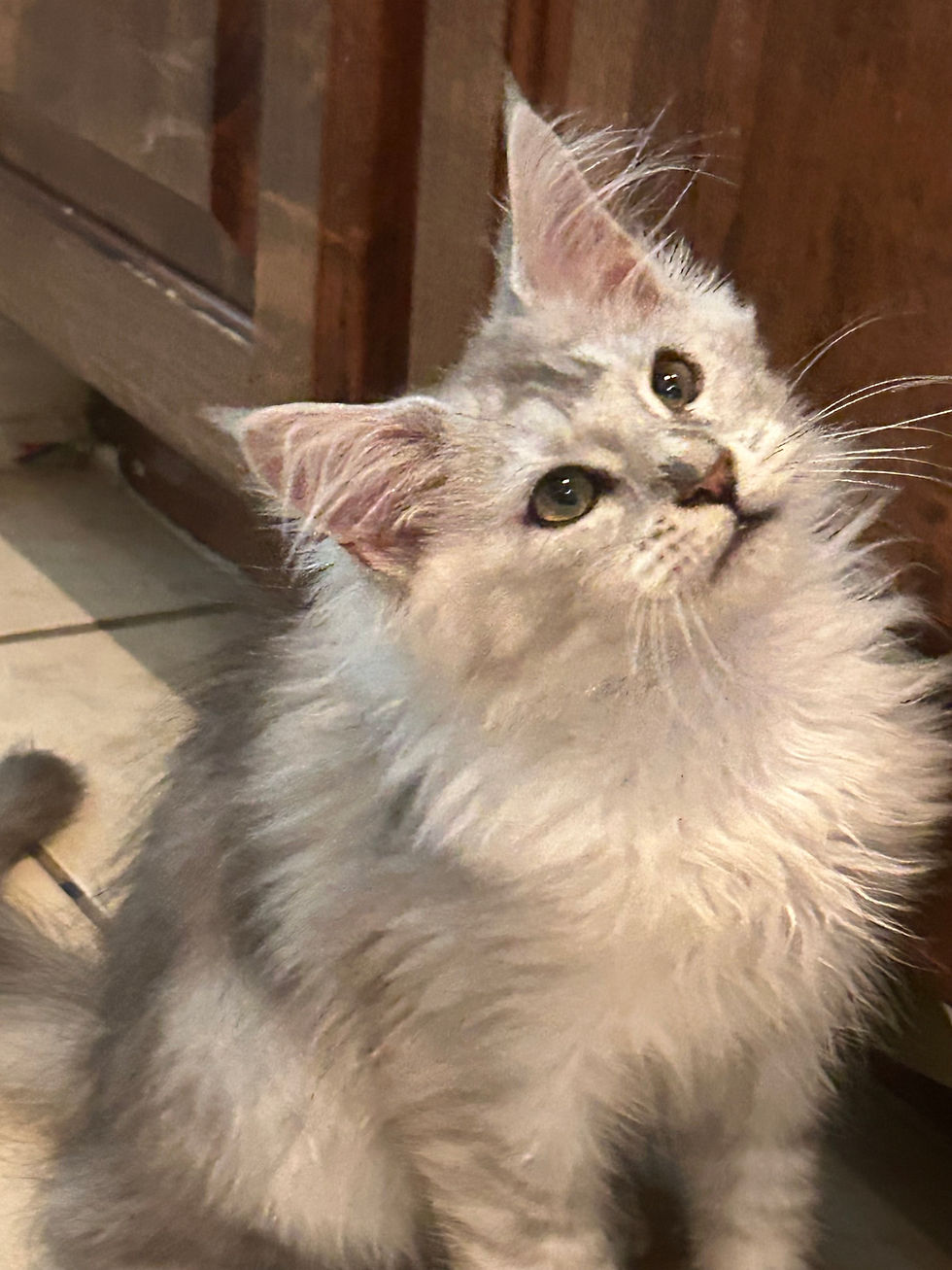Extra Toes, Extra Love: The Fascinating World of Polydactyl Maine Coon Cats
- Angela de Filippo Hernandez

- May 3, 2023
- 3 min read
Polydactyl Maine Coon is a fascinating breed of cat that has been capturing the hearts of cat lovers for centuries. These large and majestic cats are known for their extra toes, which give them a unique and endearing appearance. In this blog, we'll explore what makes polydactyl Maine Coons so special and why they are such a popular breed.

Firstly, let's talk about what makes a cat polydactyl. A polydactyl cat is one that has extra toes on their paws is typically caused by a dominant genetic mutation. In the case of a Maine Coon, this usually means having an extra toe on the front paw, making a total of six toes on each paw instead of the typical five with the front paws being the most commonly affected. While polydactyly can occur on the hind paws as well, it is quite rare for a cat to have extra toes on all four paws. Meet Shanya, our polydactyly queen with extra paws in all four paws.
This genetic mutation is relatively common in Maine Coons, and breeders have been intentionally breeding polydactyl Maine Coons for many years. When Maine Coon cats with and without polydactyly are bred together, their kittens will have varying proportions of polydactyly, but on average, around 50% of the litter will have extra toes. Breeders typically use a P or PP in the pedigree name to indicate that the cat is polydactyl. One of the most notable features of polydactyl Maine Coons is their large size. These cats are one of the largest domestic cat breeds, and their extra toes can make their already large paws appear even bigger. Another reason why polydactyl Maine Coons are so special is their history. These cats have been an important part of Maine's history for centuries, and they were even declared the state cat of Maine in 1985. The extra toes on their paws were an adaptation to help them navigate the snowy terrain of Maine, giving them better balance and stability in the harsh conditions. Certain Maine Coon cats with polydactyly may have what's known as "mitten paws," where the additional toes develop in the center of the paw, creating a thumb-like or mitten-like appearance. It's important to note that while these extra digits may resemble thumbs, they aren't actually opposable.

Did you know that polydactyl cats are sometimes called Hemingway cats?
The famous American writer, Ernest Hemingway, had a love for these unique felines. Hemingway was given a six-toed polydactyl cat by a sea captain, and he was so taken with the cat that he began to collect other polydactyl cats around his home in Key West, Florida. Over time, Hemingway's colony of polydactyl cats grew, and they became a fixture at his residence. Today, visitors to the Hemingway Home and Museum in Key West can still see the descendants of his original cats wandering around the property. In fact, there are over 50 cats on the property, and nearly half of them have the polydactyl trait. Due to Hemingway's fondness for these cats and his association with them, the term "Hemingway cats" has become synonymous with polydactyl cats. It's worth noting, however, that not all polydactyl cats are Hemingway cats, and the term should only be used to refer to those cats descended from Hemingway's original colony in Key West.
Polydactyly is a natural mutation that also occurs in other regular cats. An example is Jake, a polydactyl ginger tabby cat from Ontario, Canada, that holds the Guinness World Record for the cat with the most toes. Jake has a total of 28 toes, which is seven toes on each paw, surpassing the typical number of 18 toes for a cat. Jake's owner, Michelle Foster, rescued him from a local animal shelter and noticed his unusual paws when she brought him home. Foster submitted Jake's information to Guinness World Records in 2002, and he was officially recognized as the cat with the most toes later that year. Since then, Jake has become a bit of a celebrity, with his story being featured in numerous news outlets and even on Animal Planet's "Must Love Cats" TV show. Despite his fame, however, Jake remains a beloved family pet who loves playing with his toys and cuddling with his owners.

In conclusion, polydactyl Maine Coon cats are a unique and fascinating breed known for their adorable extra toes, affectionate personalities, and striking appearance. Their extra toes are the result of a genetic mutation, and while it does not typically cause any health problems, it does make them stand out from other breeds. The Hemingway cats are a famous example of polydactyl Maine Coons and have helped popularize the breed. While there are some potential nail-related issues that can arise from polydactyly, these can be easily managed with proper care and attention. Overall, if you are looking for a friendly, loving, and unique feline companion, a polydactyl Maine Coon might just be the perfect match for you.








Comments